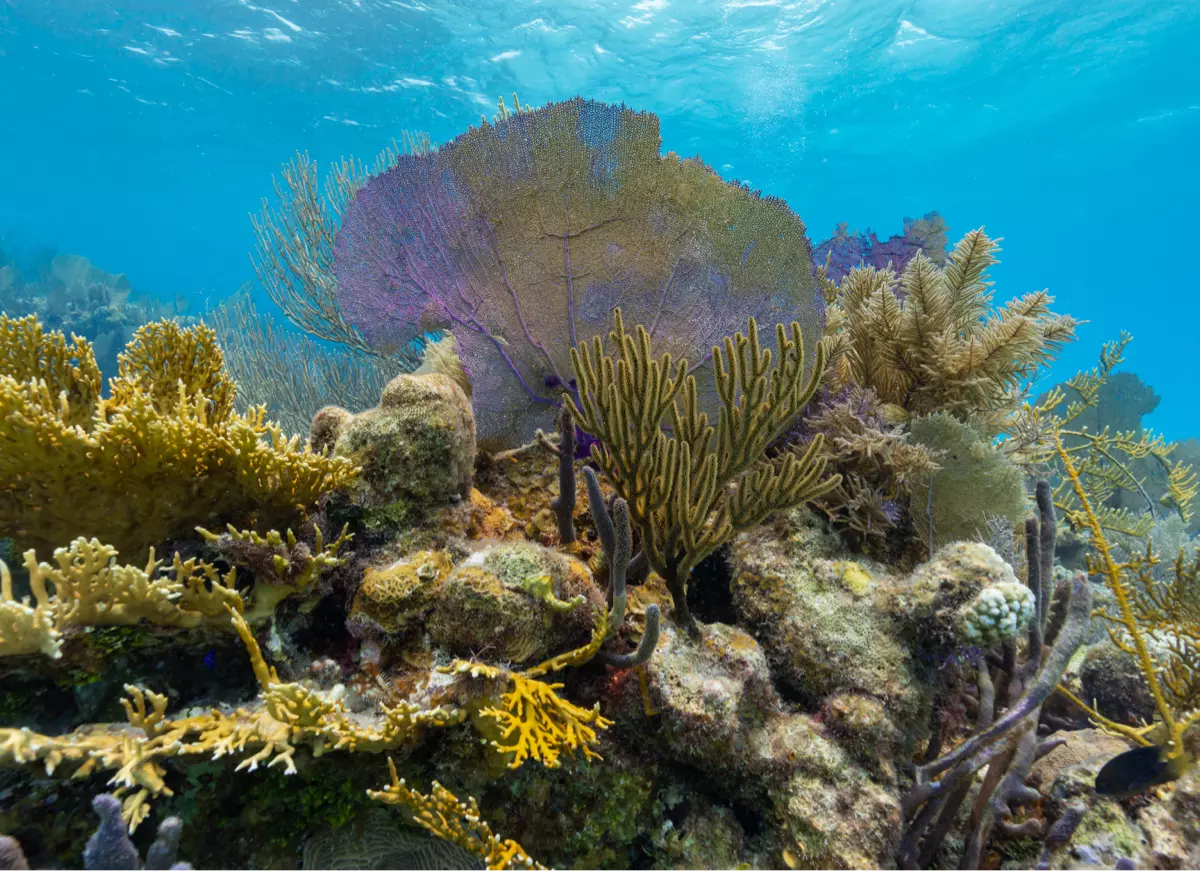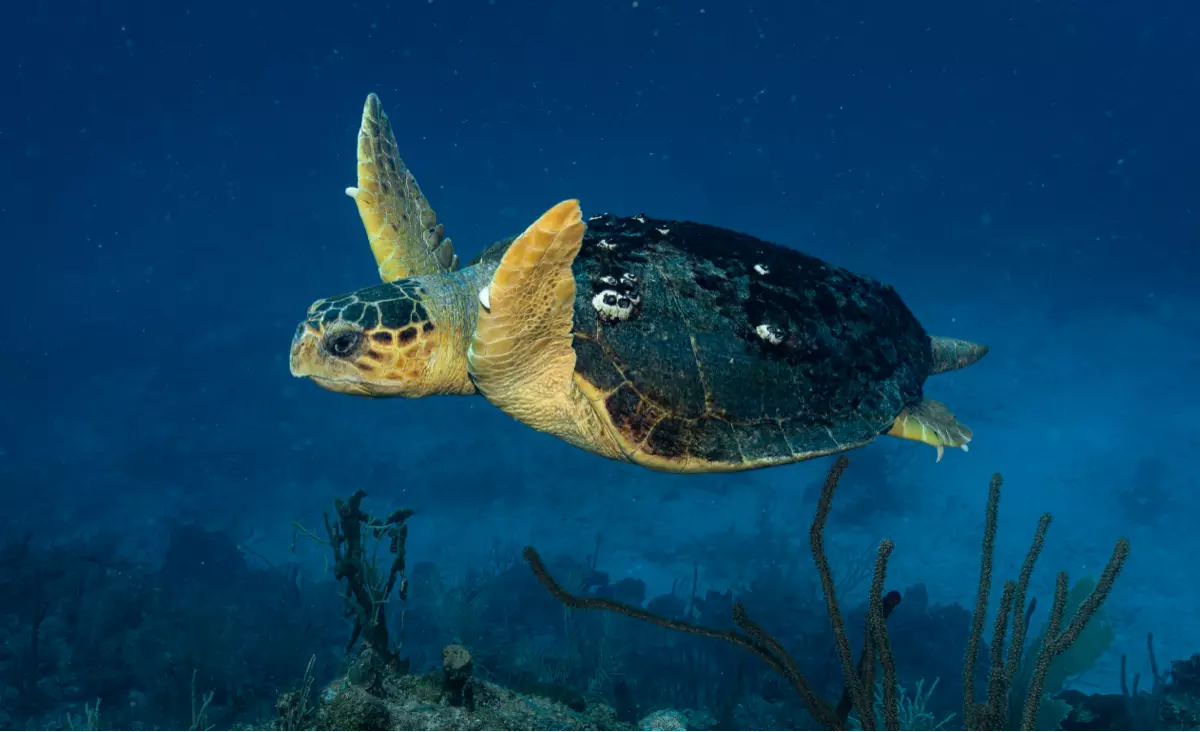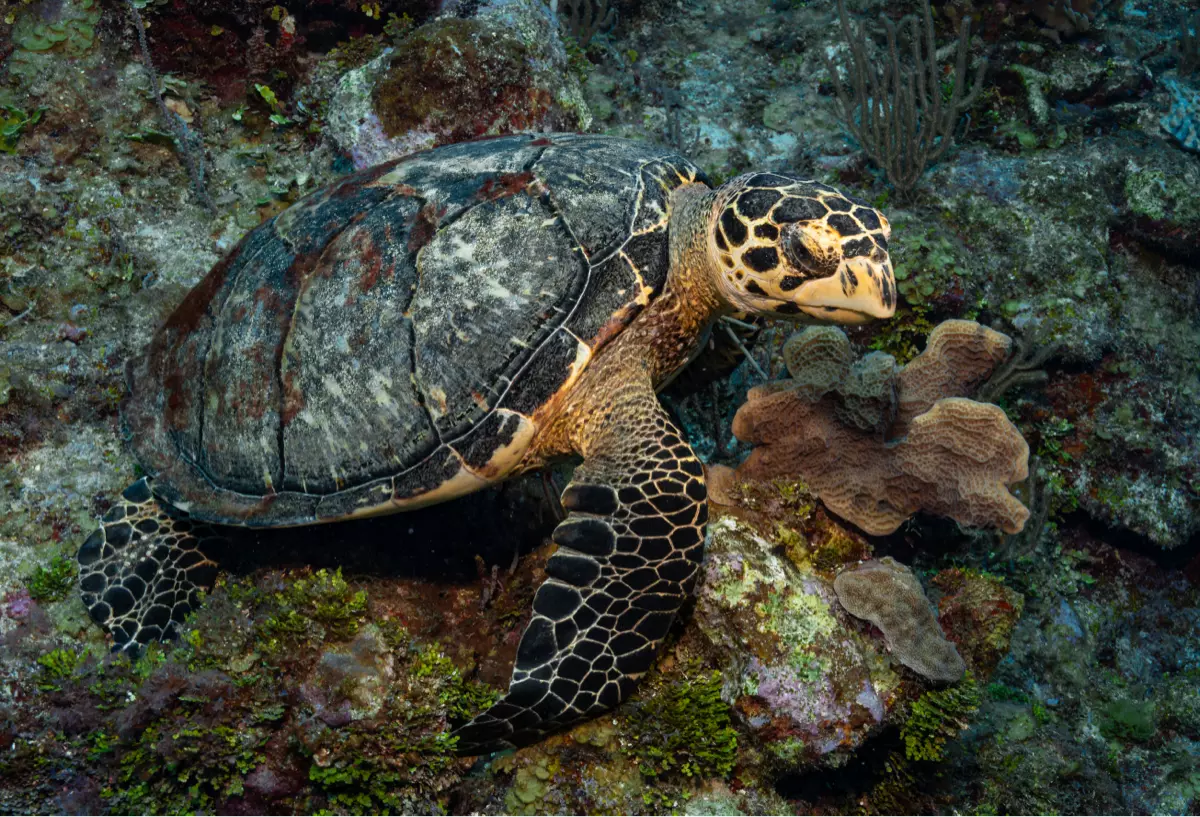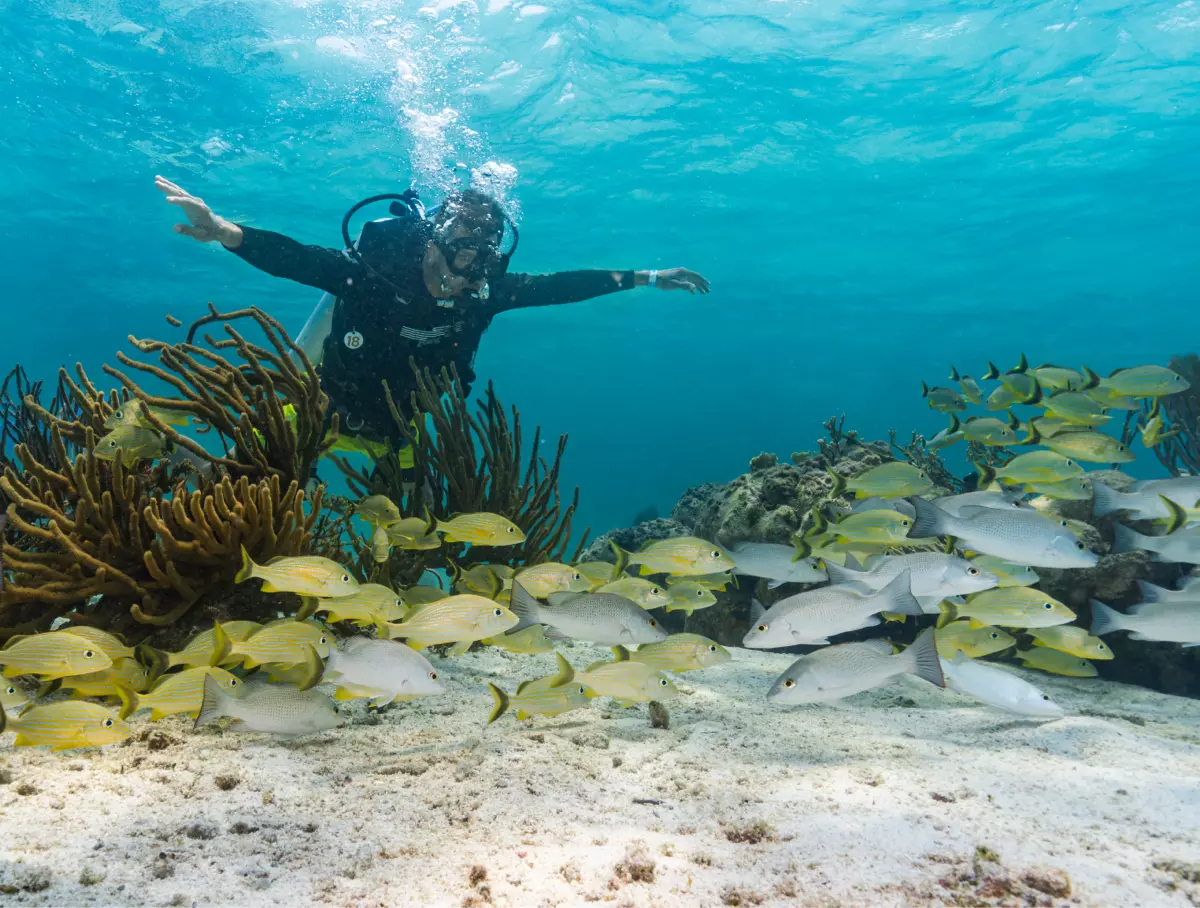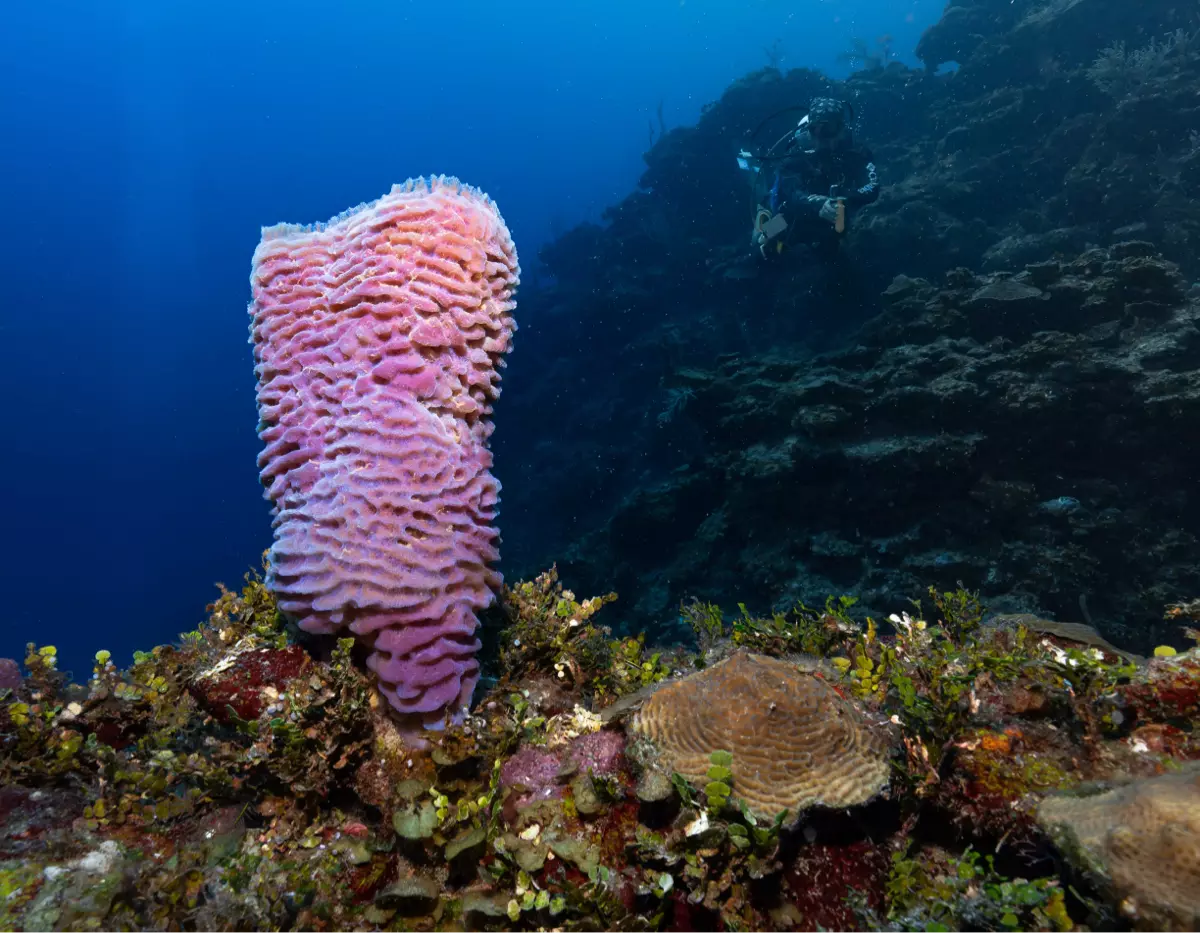Belize is known for its great natural landscapes, which are protected by a variety of national parks and reserves to around 40 percent (!) Of the state area. The biodiversity of the flora and fauna is correspondingly huge, so 4,000 species from plants are occurring, including 250 different orchids.
In 1984, special attention among nature lovers and protectors achieved the establishment of the world's first Jaguar protection area. The rainforest there not only offers an ideal habitat of this kind, but also other threatened cat species such as Jaguarundi, Peludo, Ozelot and Puma. The national animal of Belize, the lowland tapir, also benefits from the protection status of the jungle area, as well as approximately 300 bird species.
Hotspot of biodiversity: the 300 km long barrier Reef
Belize is the home of the 297 kilometer length of the largest barrieriff in the northern and western hemisphere. This UNESCO World Heritage Site protects the coast from high waves, creates a secure lagoon and inspires with an impressive underwater world that ranges from fishing floors to sea turtles to nurse sharks.
So Belize protects his precious reef
Belize is a leader in marine protection worldwide. The Blue Bond Agreement in particular has significantly supported these efforts. Blue bonds are debt titles, which are issued, for example, by governments and development banks in order to obtain capital of impact investors. With this acquired capital, projects in the marine and water area are financed that bring ecological, economic and climate-relevant benefits. By 2041, Belize has been investing $ four million in marine protection annually.

The goal is to set 30 percent of the country's sea area - over 10,000 square kilometers - under protection. In the meantime, seven protected areas are already offering endangered species such as sea cows and the American salt water crocodile.
The most valuable maritime protected areas in Belize include the Bacalar Chico National Park and the sea reserve, the Glover’s Reef Marine Reserve and the Sapodilla Cayes Marine Reserve. Divers and Schnorkler have the opportunity to experience an impressive variety of sea creatures up close.
One of the best-known nature sights and photo motifs of all of Central America is undoubtedly that, through the diving courses of Jacques-Yves Cousteau, the UNESCO protection area Blue Hole Natural Monument, which has become world famous.This funnel shaped, circular doline has a diameter of 318 meters and a depth of 125 meters. On divers, the blue hole, especially because of its underwater cavity system with up to eight meter long stalactites, exerts a special attraction.
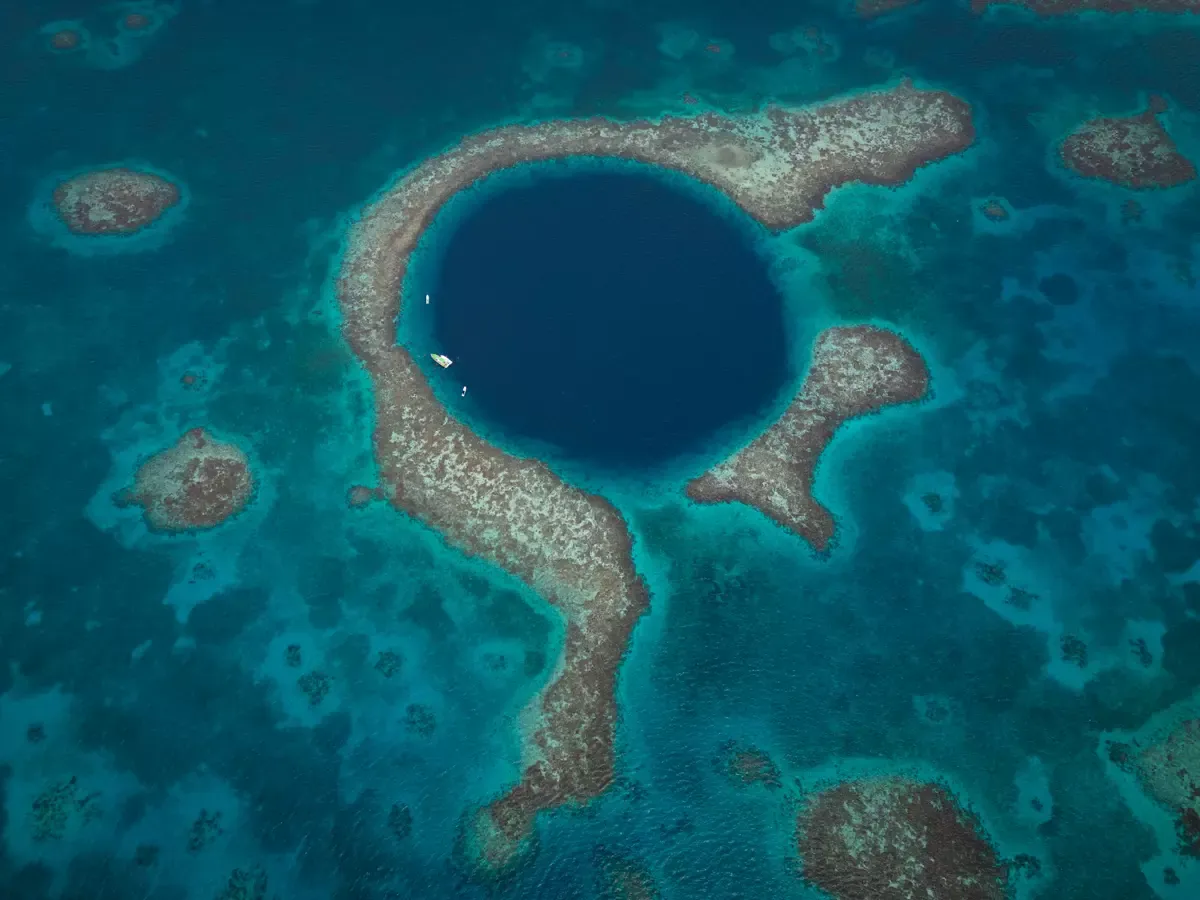
Another highlight delivers divers and snorkelers the WitConcrete Wreck, a concrete ship sunk on the coast that had been used for sugar transport and molasses across Central America after the Second World War. In the meantime, the wreck has developed into a protected habitat.
Fragments of Hope: create a habitat for corals
Die Initiative Fragments of Hope invites visitors to Laughing Bird Caye to experience the restoration of the coral reefs up close. Along the Viva Verde Path, interested parties can visit private coral breeding and thus learn more about the sustainable care of these habitats. Over 23 coral growing systems were created as part of the resettlement measures and over 100,000 corals have been planted at more than ten locations in Belize. Coral growth has increased by over 50 percent in Laughing Bird Caye National Park. Visitors can actively participate, for example with a kayak tour to the breeding station, their income flow directly into nature conservation.
Reef-Safe: Sun protection that also protects corals
A conscious handling of the riff's ecosystem begins in the small scale. Many sunscreens often contain chemicals that damage corals and promote bleaching processes. Belize therefore recommends using Reef-Safe products such as the locally produced body Belize sunscreen, which protects both the skin and the reef.
Sustainable fishing protection through conscious enjoyment
Together with several partner organizations, Oceana Belize initiated the Fish Right Eat Right program in 2016 (Frer) to curb illegal fishing and to promote sustainable fishing and food procurement in the country. The program also contributes to the protection of the ecosystem in the Belize Barrier Reefs by having the fish stocks regenerate and strengthening the marine ecosystem. Already 53 fishermen and 48 restaurateurs rely on sustainable fishing methods - an important step for the long term protection of the reef and to secure their own income.
https://www.belizetourismboard.org/
https://fragmentsofhope.org/
https://belize.oceana.org/
Text: Peter Grett
Images: Belize Touism Board

